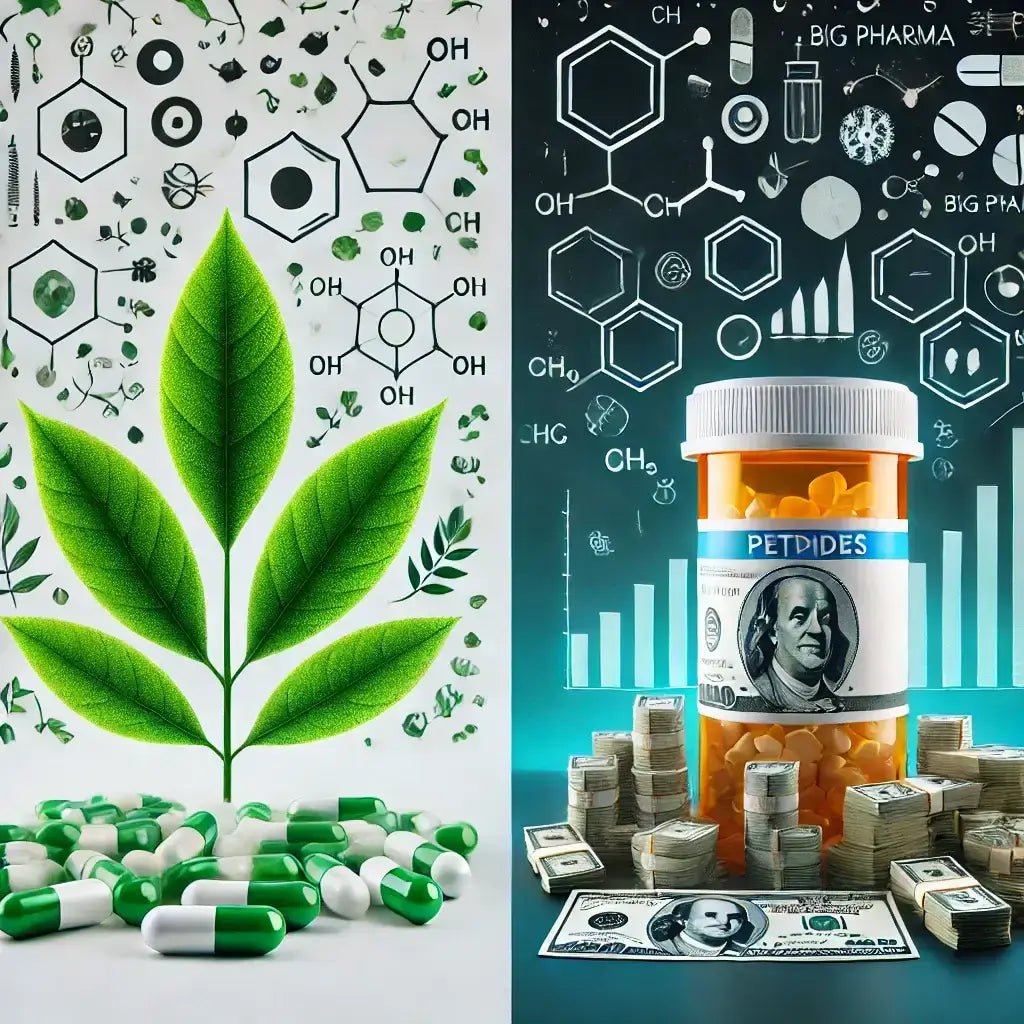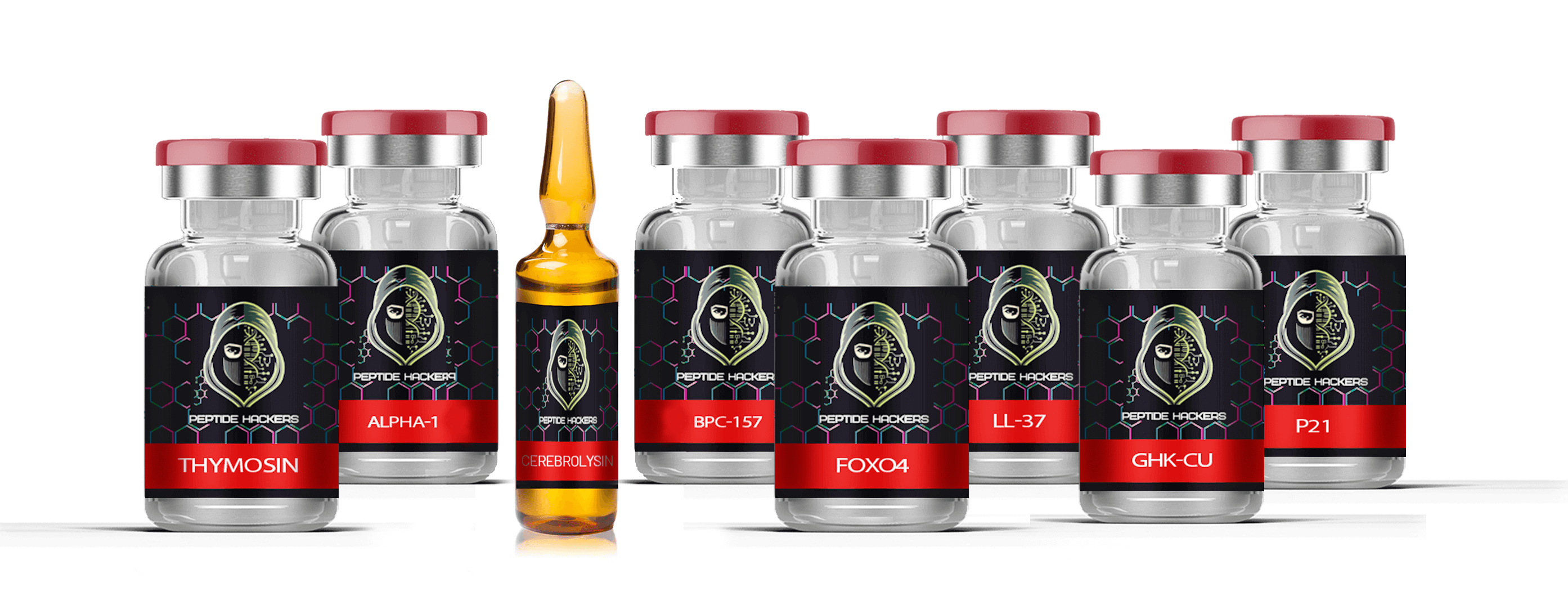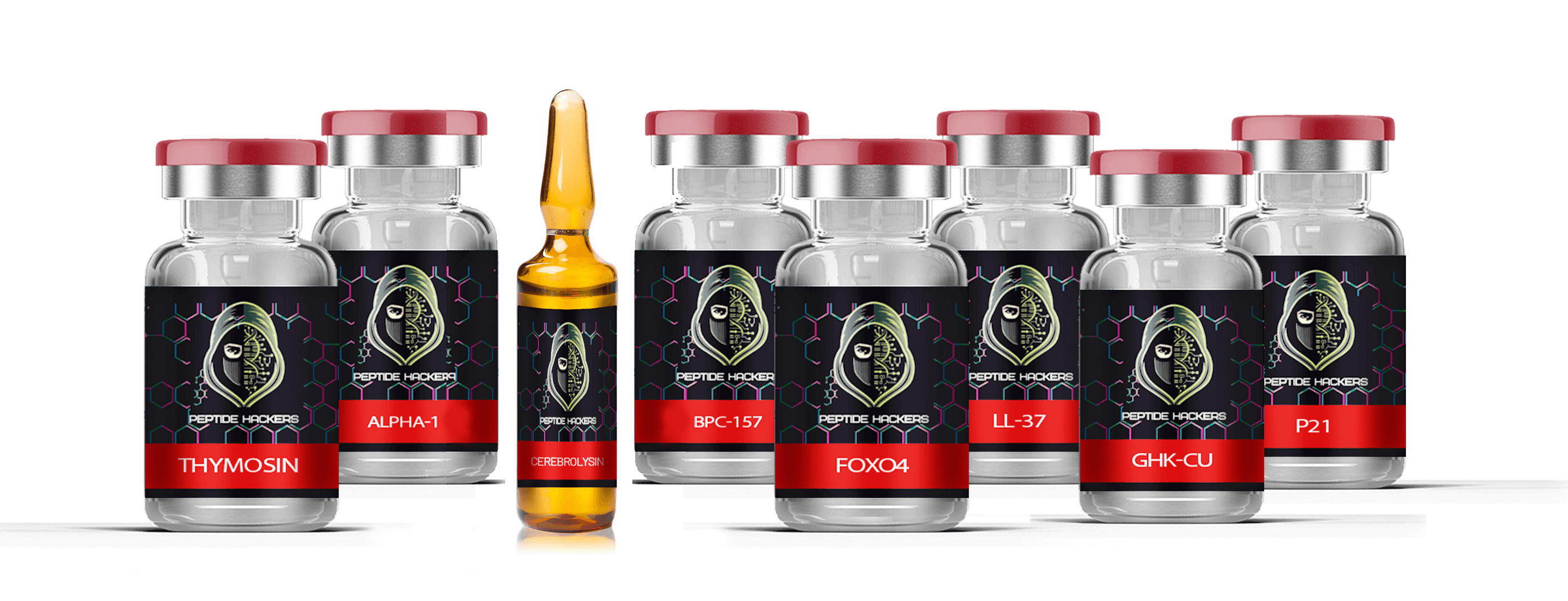Peptide Treatments vs. Traditional Pharmaceuticals: The Showdown

Unleash the Power of Peptide Treatments: Latest News and Emerging Uses

Peptide Therapeutics 101
Peptide therapeutics have come a long way since insulin rocked the world in 1921. One of the exciting advancements in this field is the development of cell-penetrating peptides, which are being explored for their potential to improve drug delivery and therapeutic outcomes in various treatments, including cancer and infectious diseases. That one discovery cracked open the door to an exploding field, especially for chronic diseases. With about 20 new clinical trials kicking off each year, peptides are in. Over 400 peptide drugs are cooking in labs worldwide, and 60+ have already hit the shelves in multiple countries.
Peptide Drug Benefits, Market and Stats
The peptide drug market is on fire. With over 60 FDA-approved drugs and about 140 more in active clinical development and trials, this market jumped from $14.1 billion in 2011 to an estimated $25.4 billion by 2018. Peptides are all the rage for treating diseases like diabetes and cancer.
Amino Acids and Peptide Structure
Peptides are just short strings of amino acids, making them different from longer proteins. The exact mix and order of these amino acids, known as the amino acid composition, dictate what a peptide does and significantly impact its stability and ability to cross cell membranes. Natural peptides have the same amino acid building blocks as the ones found in your body, but we can tweak them to give them a little extra kick, especially for the nastier diseases.
Therapeutic Peptides: Current Uses
Peptides have been making headlines for over a century, ever since insulin stepped onto the stage to manage diabetes. It’s the OG example of turning a natural hormone into a powerful treatment. Nowadays, synthetic peptides, are also used in cancer treatment, even playing messenger for radioactive substances, dyes, or as probes to help diagnose tumors. Peptide vaccines are also muscling in on cancer treatment.
Rational Design of Peptide Therapeutics
When it comes to developing new peptide therapies, it’s all about rational design. This means fine-tuning natural peptides to make them better—whether that’s identifying key amino acids, avoiding harmful interactions, or improving solubility. Computational tools and models make it easier to design these peptides for therapeutic use.
Methods for Plasma Half-Life Extension
One of the biggest headaches with peptides is extending their plasma half-life. Strategies to deal with this include limiting enzymatic degradation, enhancing their structures, or binding them to circulating proteins. By messing with their chemical makeup, we can make these peptides last longer in the body, making them more effective treatments.
Peptide Drug Development Challenges
Developing peptide drugs is no cakewalk. Issues like poor cell membrane, permeability and instability in the body make the process tricky. These challenges have sparked a ton of research into improving their structure and developing better drug delivery systems. Cracking these challenges is key to ensuring peptides can hit their targets and do their job inside cells.
Drawbacks of Peptide-Based Therapeutics
Peptides are promising but come with a laundry list of limitations, including poor membrane permeability, low oral bioavailability, shorter half-lives, variable solubility, and poor metabolic stability. Researchers are exploring various strategies to enhance these peptides’ therapeutic potential, like protecting their ends, modifying chemical structure of their backbone, and identifying crucial residues.
Ways to Overcome Drawbacks
Researchers are hustling to make peptide-based therapeutics more stable and effective. By protecting the ends, modifying the backbone, tweaking side chains of amino acids, and pinpointing critical residues, they’re trying to make peptides more resistant to degradation, better at crossing cell membranes, and overall more effective.
Peptide Modification and Engineering
Tweaking and engineering peptides can significantly boost their therapeutic potential. This might involve swapping out amino acids, building structure-activity relationships, or incorporating unnatural amino acids to enhance the peptide’s properties. These changes are vital for developing new therapeutics that can tackle complex diseases.
Computational Methods and Modeling
Designing peptides is heavily supported by computational methods and modeling. Bioinformatics tools make it easier to optimize peptides, ensuring their chemical structures are up to the task. These tools help researchers design more effective peptide drugs by predicting how changes will affect the peptide’s behavior.
Peptide-Based Drug Delivery
While peptides show promise as drug candidates, they face significant challenges, particularly with drug delivery. Low oral bioavailability and difficulty crossing physiological barriers are major roadblocks. To overcome these issues, researchers are exploring alternative delivery systems, including transdermal, pulmonary, nasal, buccal, and oral routes, to boost the effectiveness of peptide therapies. The best is to inject, because taking a pill just breaks down in your stomach.
Targeted Therapies and Routes of Delivery
Targeted therapies are crucial for improving the therapeutic potential of peptides. Delivery methods range from traditional routes like intravenous, intramuscular, and subcutaneous injections to alternative methods that might offer better results depending on the treatment scenario. These targeted approaches are especially useful for treating metabolic disorders and cancers by directly engaging extracellular and intracellular targets.
Peptide Therapeutics in Disease Treatment
Peptides are being increasingly used to treat a wide range of diseases, from metabolic disorders to cancer and infectious diseases. For example, liraglutide, a GLP-1 analog, and semaglutide, a glucagon-like peptide-1 receptor agonist, have been highly successful in treating both diabetes mellitus, and obesity. These peptides act on protein-coupled receptors, making them effective in managing chronic conditions.
Future of Peptide Therapeutics Research

The peptide therapeutics market is expected to keep climbing, with a compound annual growth rate (CAGR) of 9.1% from 2016 to 2024. This growth is driven mainly by the rising incidence of metabolic diseases and cancers. As peptide drugs evolve, they’re no longer limited to mimicking hormones or consisting of natural amino acids. Instead, they’re becoming more sophisticated, with the potential to revolutionize the treatment of various conditions.
Conclusion and Future Outlook
Peptides have proven themselves as unique therapeutic agents due to their distinct biochemical properties and therapeutic potential. While they outshine small molecules and large biologics in some areas, challenges like poor membrane permeability and in vivo stability remain. However, advances in computational structural prediction and chemical modifications are helping to improve their stability, affinity, and specificity. Looking forward, peptide therapeutics are likely to continue growing, but developing cost-effective production methods will be critical for their widespread adoption.
Effectiveness: Who’s Winning?
Peptide Treatments
Peptides are like surgical strikes in the medical world, zeroing in on specific areas in the body, so they often come with fewer side effects. For example, insulin—a peptide that’s been around for years—has been used to control blood sugar levels. But the peptide therapeutic family is growing, and newcomers like LL-37 are showing promise in fighting infections and possibly even cancer. BPC-157 is another hot one used for healing injuries and reducing inflammation. FOXO4-DRI is a synthetic peptide that disrupts the interaction between proteins in cells, providing a novel therapeutic approach for targeting and eliminating old, damaged cells. And don’t forget Vasoactive Intestinal Peptide (VIP), which is being explored for its potential in treating heart conditions by improving blood flow and protecting the heart.
Traditional Pharmaceuticals

On the other hand, traditional drugs take a broader approach—effective, yes, but often with a shotgun effect. Opioids are powerful painkillers but come with significant risks, including addiction and a range of side effects. NSAIDs (non-steroidal anti-inflammatory drugs) help with pain relief but can also cause stomach problems and other issues. While these drugs work, sometimes the cost—both financially and physically—can be high, especially when compared to more targeted peptide therapies.
Safety: Who’s Watching Your Back?
Peptide Treatments
Peptides generally have a better safety profile because they’re so targeted. They’re like precision instruments in the pharmaceutical world—they don’t linger in your system long, reducing the risk of side effects. For example, LL-37 has antimicrobial and anti-cancer properties, and BPC-157 is known for its regenerative effects. These peptides don’t cause as much trouble in the body, but there’s always the possibility of an allergic reaction or other unexpected immune response, which is something that needs to be monitored in peptide therapy.
Traditional Pharmaceuticals
Traditional drugs can be a bit of a blunt instrument when it comes to safety. Because they affect more of the body, they can cause a lot of side effects. For example, chemotherapy drugs are effective at killing cancer cells, but they can also damage healthy cells, leading to significant side effects like hair loss, nausea, and fatigue. It’s like using a sledgehammer to crack a nut—effective, but with a lot of collateral damage.
Cost: How Much?
Peptide Treatments
Peptides are expensive, no doubt about it. The process of making them isn’t easy—it’s like crafting a bespoke suit rather than mass-producing T-shirts. But as technology improves, these costs are coming down. And because peptides like LL-37, BPC-157, FOXO4-DRI, and VIP are so effective, they might actually save you money in the long run by reducing the need for other treatments or managing side effects.
Traditional Pharmaceuticals
Traditional drugs, especially older ones, tend to be more affordable. Generics can be dirt cheap, but don’t let the low price tag fool you—what you save upfront, you might pay later in side effects or other treatments. Plus, getting traditional drugs approved is a long and expensive process, and those costs often get passed down to you, the consumer.
Real-World Examples: The Big Boys

Novo Nordisk A/S
Novo Nordisk is a Danish pharmaceutical giant that’s been around for over 80 years. They built their reputation on diabetes care, but their portfolio also includes haemostasis management, growth hormone therapy, and hormone replacement therapy. With production facilities in eight countries and offices in 75, Novo Nordisk employs over 23,000 people, with a big chunk focused on research and development. They’re behind major products like Ozempic (for diabetes) and Wegovy (for obesity management), both of which are GLP-1 receptor agonists. But Novo Nordisk isn’t just about innovation—they’re also known for fiercely protecting their market share, often issuing cease-and-desist orders to smaller companies that get too close to their patented peptide treatments.
Bayer Schering Pharma
Bayer Schering Pharma is a global leader in specialty pharmaceuticals with a focus on diagnostic imaging, haemostasis/cardiology, oncology, primary care, specialized therapeutics, and women’s health. Bayer is committed to medical progress and improving quality of life through innovative products. They’re part of the InnoMed Consortium, which aligns with their mission to make safer, more effective medicines available to patients. Bayer is exploring the potential of peptides like LL-37 to enhance traditional cancer treatments by inhibiting tumor growth and boosting the immune system. They’re also investigating BPC-157 for its regenerative properties, especially in cardiovascular health. Bayer AG, the parent company, is a German multinational and one of the largest pharmaceutical and biotech companies in the world. Headquartered in Leverkusen, Bayer operates in consumer healthcare, agricultural chemicals, seeds, and biotechnology products and is a key player in the EURO STOXX 50 stock market index.
Servier
Servier is another big player in the pharmaceutical world, operating in 149 countries with over 21,700 employees. They’re the first independent French pharmaceutical group and invest heavily in research, dedicating 25% of their turnover to R&D. Servier is active in the peptide therapy space, investigating LL-37 and FOXO4-DRI for cancer treatment. They’re also looking into Vasoactive Intestinal Peptide (VIP) for cardioprotective effects, which could complement traditional heart treatments. Servier is all about innovation, combining the best of traditional therapies with peptide research to improve patient outcomes.
Challenges: Not All Sunshine and Rainbows

Peptides are promising but not without challenges. Most peptides need to be injected, which isn’t as convenient as popping a pill. They require careful storage, which can add costs. And because peptides are relatively new in the pharmaceutical world, they face more regulatory hurdles than traditional drugs, which can delay their availability and increase development costs.
Conclusion: The Verdict
Peptide treatments are gaining traction because they’re targeted, effective, and generally safer than traditional drugs. But they come with a big price tag and some logistical challenges. Traditional drugs still have their place, mainly because they’re cheaper and more accessible. However, as research continues, peptides like LL-37, BPC-157, FOXO4-DRI, and VIP could become mainstays in treating many conditions. It’s all about weighing the pros and cons and working with your doctor to determine what’s best for you.
References
InnoMed PredTox Member Organizations
Bayer on Wikipedia (English)
Novartis on Wikipedia (Arabic)
Sanofi on Wikipedia (Malay)
Novo Nordisk on Wikipedia (Turkish)
Servier on Wikipedia (Russian)
Servier on Wikipedia (Spanish)
Servier on Wikipedia (Bulgarian)
Hoffmann-La Roche on Wikipedia (Slovak)
Novartis on Wikipedia (English Mobile)
MDPI International Journal of Molecular Sciences
InnoMed PredTox Official Website
- Tags: addiction recovery addiction treatment AOD9604 Bayer Schering Pharma BPC-157 CJC-1295 Drug Development DSIP Epithalon Follistatin FOXO4-DRI GHK-Cu GLP-1 Receptor Agonists Humani Insulin Ipamorelin Kisspeptin Liraglutide LL-37 Melanotan II MOTS-c Novo Nordisk Oxytocin Peptide Therapeutics Peptide Treatments Pharmaceutical Industr Selank Semaglutide Semax Servier TB-500 Thymosin Alpha-1 Thymosin Beta-4 Traditional Pharmaceuticals Vasoactive Intestinal Peptide (VIP)


